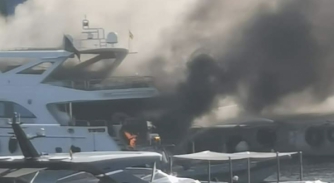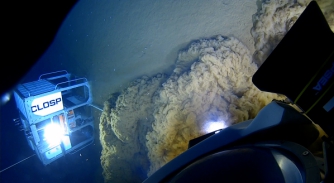Another week, another fire
Instead of searching for specific factors to blame, the time is right to reflect on safety across the industry…
During a busy season, accidents happen, and the frequency across 2022 and into the early part of 2023 has been high. It is not really a media secret to say that these stories get a lot of attention and engagement. We will report, with caution, on these stories. However, the ‘if it burns it earns’ attitude to coverage is uninterested in circling back and interrogating the root of this issue.
The reports take months and years to emerge, and by then the news cycle has moved on, and the hot takes on the causation will have long since embedded themselves as ‘may as well be truths’. As we await the findings and play culpability Cluedo this show season, we should be having a broader conversation about safety in the superyacht industry, and not fixating on whether the culprit was the stewardess in the cabin with the candle, or the deckhand with the battery in the bosuns' locker.
We like to attribute causation to one thing, this is not unique to the superyacht industry. It can be morbidly comforting to blame something specific, even if the outcome of an incident was horrific. Having something to pin the blame on gives a sense of resolution, and implies a quick fix. Lithium Ion batteries may indeed have issues when charging but are unlikely to be the full story, for example.
The Space Shuttle Challenger exploded in 1986, 73 seconds after take-off, killing all seven astronauts onboard. An extensive investigation concluded that the disaster was caused by the failure of the two redundant O-ring seals in a joint in the shuttle's right solid rocket booster. The unseasonably low temperatures on launch day had caused the o- ring to lose its seal, and this led to the explosion.
However, that was not the whole story, and only more than 30 years later did a more complete, and more complicated story emerge. Engineers had expressed concerns about the potential failure of the o-ring for months. The launch schedule at NASA had been accelerating to unsustainable levels, and the pressure to keep up the mission count had led to these concerns being ignored, and the probability statistics related to potential failure were manipulated. They had never lost an astronaut during a mission and used this self-congratulatory safety record to justify pushing ahead.
The o-ring was just the weak link, it was the culture and the system at NASA that snapped under pressure. But it is easier to blame a piece of rubber than completely re-evaluate operational procedures. Literal rocket scientists messed this one up. We could too. We are a relatively safe industry, especially at the top end of the market. Nor are we building spaceships, but we are still pushing the limits. Flag & Class are there to impart this ambition with safety, but we are moving fast. And, as the adage of silicone valley goes, we are going break things.
The prototypical fire or grounding-prone yacht, as we have seen in recent months, is under 40m, non-ISM compliant, past its prime and plastic/GRP. To extend the stereotype further, in many cases these are not the kind of boats that tend to attract the top end of the crew talent pool either. That these yachts are encountering issues should come as no big surprise.
The reality of safety onboard is nuanced. All superyachts sit on a safety spectrum. A fully ISM compliant large yacht - one with a professional, and highly paid crew - and a 20-year-old private vessel with a checkered maintenance record and manned part-time - are very much at opposite ends of this spectrum.
Still, I have worked on fully compliant yachts and had a thousand near misses. Ask any crew member on an active yacht and they can share theirs. The fact that they are close calls, and not incidents, are partly down to the safety measure and systems in place. Others are just blind luck.
A chief engineer once told me that thing that kept him up at night was that every single light bulb onboard the 70m yacht we both worked on had a capacitor that may ignite, like one he had found by chance one day. That image stuck with me. As I would walk the boat, the benign light hit differently.
Brokers are saying that they cannot find enough stock to meet demand. The new build yards are full, and the overflow is spilling across many yards that were once considered second or even third rate. Crew agents are saying in near unison, that they are desperately short of quality crew, even more so with respect to senior management and captains.
In a market this rampant, some poor yachts are going to fall into the hands of inexperienced owners with second-rate crews and more incidents are going to happen. At the other end of the spectrum, we are pushing the technological envelope, striving for new fuels and energy solutions, and exploring the bottom of the Mariana trench and the polar regions.
I frequently hear that ‘Classification societies are too slow’ or that 'the MCA are dragging their heels' like it’s a bad thing. I think that caution is warranted. We have not had our Challenger Disaster, but neither had NASA until that freezing morning.
These may only seem like a few small fires and a couple of groundings, but I think it’s the right time to re-centre the safety conversation. Whatever the causes of these most recent incidents are, let’s not jump to blame the batteries or whatever headline may be taken from the abstract of the report. Yachts don’t operate with as much safety surplus as many think. Growth and ambition are what the industry is built on, but left unchecked, or worse when warnings are ignored, people can get killed.
These fires and groundings may seem isolated, but they may be the first signs of stress on a system that does not have much to give. When we learn from mistakes, they don’t always have to be our own.
NEW: Sign up for SuperyachtNewsweek!
Get the latest weekly news, in-depth reports, intelligence, and strategic insights, delivered directly from The Superyacht Group's editors and market analysts.
Stay at the forefront of the superyacht industry with SuperyachtNewsweek
Click here to become part of The Superyacht Group community, and join us in our mission to make this industry accessible to all, and prosperous for the long-term. We are offering access to the superyacht industry’s most comprehensive and longstanding archive of business-critical information, as well as a comprehensive, real-time superyacht fleet database, for just £10 per month, because we are One Industry with One Mission. Sign up here.
Related news

Fire causes 33m superyacht to sink in Ibiza
It has been reported that the fire began in the engine room, fortunately, no injuries have been reported
Fleet

The Ring of Fire Expedition reaches new depths
Caladan Oceanic completes the first ever human descents of the Yap and Palau trenches
Owner

Out now! The Pacific Tour - Part Two
The second and final instalment of The Pacific Tour films concludes an inspirational three days in the Canadian wilderness
Business
Related news
Fire causes 33m superyacht to sink in Ibiza
3 years ago
The Ring of Fire Expedition reaches new depths
3 years ago
Out now! The Pacific Tour - Part Two
3 years ago
NEW: Sign up for
SuperyachtNewsweek!
Get the latest weekly news, in-depth reports, intelligence, and strategic insights, delivered directly from The Superyacht Group's editors and market analysts.
Stay at the forefront of the superyacht industry with SuperyachtNewsweek



